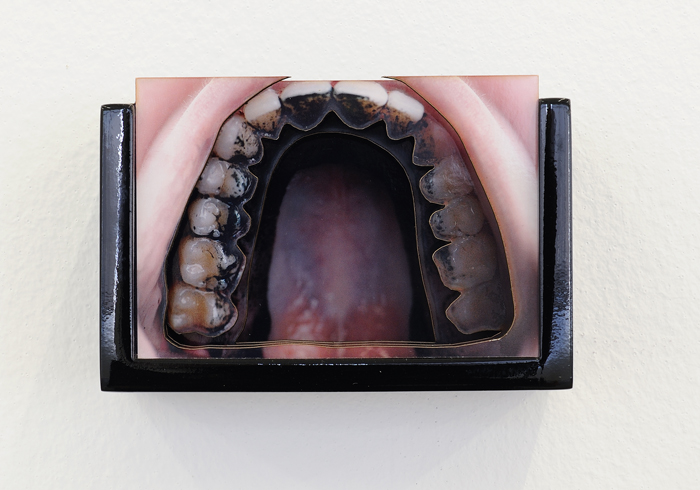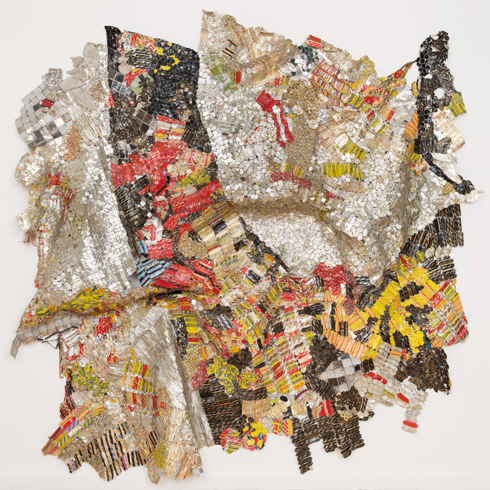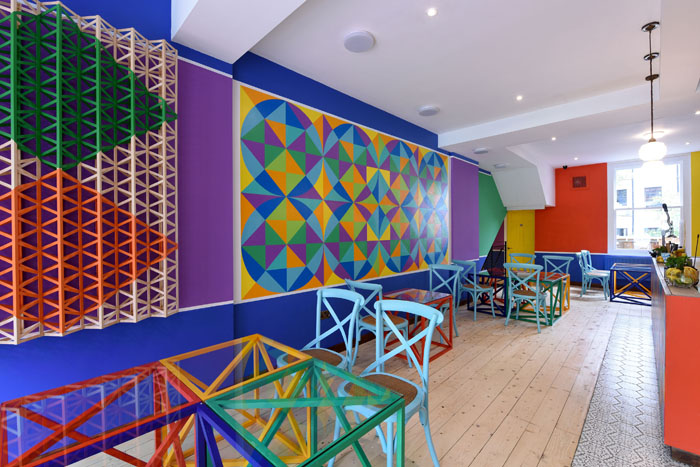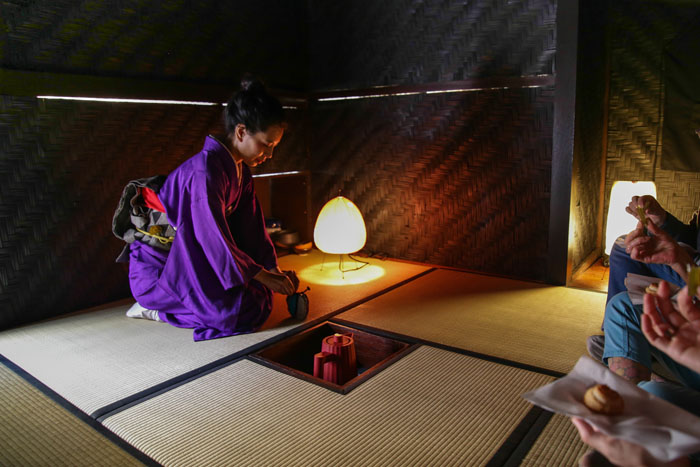As ArtReview Asia prepares to whirl around like a dervish through this season’s exhibitions in the hope of attaining some new aesthetic ecstasy, it remembers the words of the Sufi mystic Rumi: ‘On the seeker’s path, wise men and fools are one’. So go forth with an open mind, for the best art treads a very fine line between wisdom and foolishness. But listen to ArtReview Asia’s advice. It’s an exception to Rumi’s rule. But you already knew that.

Lawrence Abu Hamdan at Sfeir-Semler Gallery, Beirut, through 4 January
Over in Britain, self-described ‘private ear’ Lawrence Abu Hamdan may be among the four artists nominated for this year’s Turner Prize (their work is on show at Turner Contemporary in Margate until 12 January and the winner is announced on 3 December, for those of you who continue to care about such things despite what Rumi told you), but his largest exhibition to date is on show at Sfeir-Semler Gallery in Beirut. Featuring eight installations and titled Natq, an Arabic word that refers to a moment of utterance (which might also describe the basic impulse for creating a work of art in the first place), the exhibition offers an opportunity to encounter works by an artist who specialises in sensitising audiences to sounds they do not hear and languages they do not speak. Included among the works is Walled Unwalled (2018), a 20-minute video, recently on show at the Venice Biennale, that examines a series of legal cases that hinge on sounds transmitted through walls and other enclosing or isolating architectures, and that evolved from a 2016 investigation of the Saydnaya prison in Syria. Other works explore cases linked to the Lebanese civil war and the application of new technologies to lie detection. On the one hand Abu Hamdan attempts to capture a poetics of everyday utterances (whether by people or by objects), on the other he attempts to apply it to a search for the concealed truths of real life. His works may be on show in a gallery, but their implications reach far beyond.
Given the extent that works like Walled Unwalled operate to dissolve limits to speech (whether those limits are physical or otherwise), it’s either ironic or appropriate (depending on your point of view) that at the time of writing Sfeir-Semler is temporarily closed on account of protests triggered by the financial collapse of Lebanon, associated accusations of corruption and incompetence, and the more immediate trigger of a proposed tax on messaging service WhatsApp.

Sharjah Architecture Triennial, Sharjah, through 8 February
From the Mediterranean Sea to the Persian Gulf, where the first Sharjah Architecture Triennial is taking place in the emirate. Abu Hamdan will have made that journey too, with a new performance work (evolved from a video-work, on show in Beirut, that premiered at this year’s Sharjah (art) Biennial) that explores reincarnation (Rumi didn’t believe in that) as a medium for justice. Titled Rights of Future Generations and curated by Adrian Lahoud, the triennial seeks to locate the built environment as the product of social, cultural and economic forces. Consequently, and as Abu Hamdan’s contribution might have led you to understand, this is more than a collection of architectural models and engineering reports. So alongside explorations of themes that one might naturally associate with the discipline of architecture, such as housing, city morphologies, land rights, climate change and climate justice, expect talks and displays reflecting on ‘Afterlives’, ‘Radical Kinship’, ‘Intergenerational Transmissions’ and ‘Devotional Practices’ (Rumi would like that one). Other highlights include a new project (on ‘The More-than-Human Anthropocene’) by Feral Atlas and a new film commission by the Propeller Group’s Tuan Andrew Nguyen. The latter explores indigenous histories of the Great Sandy Desert in Western Australia via the story of the Ngurrara Canvas ii (1997, and also on show at the triennial), a painting that was collectively produced by indigenous artists to support a successful native-title land claim. For more on that, see the collection of essays relating to the theme of the triennial published on artreview.com. Sound art as evidence, painting as evidence… there’s a theme developing here.

El Anatsui at Mathaf: Arab Museum of Modern Art, Doha, through 31 January
Still, no time to dwell on that (for now). It’s a six-and-a-half-hour drive along the shores of the Persian Gulf to Doha, where Mathaf is hosting a retrospective exhibition by septuagenarian Nigeria-based, Ghana-born superstar El Anatsui. Titled Triumphant Scale, the exhibition is curated by the late, great Okwui Enwezor and Chika Okele-Agulu, and travels to Qatar from Haus der Kunst in Munich. As the title suggests, it focuses on the artist’s monumental works as well as the artist’s belief ‘that artists are better off working with whatever their environment throws up’: in Anatsui’s case, most famously bottlecaps, from which he has produced a series of largescale works. ArtReview Asia is not sure what to do with the cigarette butts and coffee cups that litter its working environment; it still waits for inspiration to strike. Back in Doha, alongside the bottlecaps will be the artist’s less well known productions in wood, ceramics, drawing and printmaking that marked his experiments in fusing the traditional with the contemporary.

The Posthuman City: Climates. Habitats. Environments. at NTU Centre for Contemporary Art, Singapore, through 23 February
If your appetite for an expanded field for architecture and urbanism (complete with a dash of the ‘more-than-human’) was pricked by the lineup in Sharjah, then you’ll be wanting to long-haul it to Singapore, where the NTU Centre for Contemporary Art hosts The Posthuman City: Climates. Habitats. Environments. In a present in which more than half the world’s human population lives in cities, with a consequent contribution to the climate crisis and general environmental degradation, the exhibition explores alternative modes of living and sharing resources with Earth’s nonhuman species, via works by Pierre Huyghe, Hito Steyerl, Irene Agrivina and Jae Rhim Lee, among others. Look out also for Australian Nicholas Mangan’s Termite Economies (2018). Based on an anecdote (as all the best things are) about The Common- wealth Scientific and Industrial Research Organization researching termite behaviour in the hope that one day termites might lead miners to gold deposits (Rumi didn’t approve of exploiting anything for economic gain: ‘If you want money more than anything,/you will be bought and sold./If you have a greed for food,/ you will become a loaf of bread./This is a subtle truth./Whatever you love, you are.’), it features 3D-printed models of termite architecture fused with mining architecture alongside a series of videoworks. Wise termites and fools? Definitely something like that.

Suddenly Turning Visible: Art & Architecture in Southeast Asia (1969–1989) at National Gallery Singapore, through 15 March
Down the road at the National Gallery Singapore, architecture, again filtered by art, is also on view (you’d think these institutions were working in cahoots or something). Suddenly Turning Visible: Art & Architecture in Southeast Asia 1969–1989 promises to examine ‘developmentalism’ – the focus ‘on industrialisation and economic growth as state priorities for nation building’ – in three Southeast Asian cities: Bangkok, Manila and Singapore. The exhibition does this via comparative studies of an influential art institution in each city: the Alpha Gallery in Singapore (set up by the architect Lim Chong Keat in 1971); Cultural Center of the Philippines in Manila (a state organisation set up by President Ferdinand Marcos in 1969 to promote art and culture in the Philippines, now also a popular site for shooting pop videos); and Bangkok’s Bhirasri Institute of Modern Art (set up in 1974 by a mix of Thais and ex-pats and closed in 1988, a precursor to the troubled state-run Bangkok Art and Culture Centre). The focus of the show, which also includes 50 artworks alongside archives and new com- missions and restaged works, is to examine how international art movements (MIT-trained Lim is a fan of the Bauhaus, for example) were transformed or adapted by contact with South- east Asian (inasmuch as the region is represented by those three cities alone) vernacular and folk traditions. Let’s hope it looks at what was neglected or lost during the ‘developmentalist’ era as much as it highlights what was gained. The former might well be summed up in a statement by the late, longstanding Singapore prime minister, Lee Kuan Yew, published in 1987: ‘I am often accused of interfering in the private lives of citizens. Yes, if I did not, had I not done that, we wouldn’t be here today. And I say without the slightest remorse, that we wouldn’t be here, we would not have made economic progress, if we had not intervened on very personal matters – who your neighbour is, how you live, the noise you make, how you spit, or what language you use. We decide what is right. Never mind what the people think.’ Wise people and fools, Mr Lee.

Rasheed Araeen / Shamiyaana at 8 Cazenove Road, London, ongoing
Circling back to the subject of art and architecture for a moment, did you know that Karachi-born, London-based conceptualist Rasheed Araeen has opened a restaurant? Art-chitecture lovers will be making a beeline to 8 Cazenove Road in Stoke Newington, London, to see the Magiciens de la Terre graduate’s (ask your parents) Shamiyaana, a ‘communal meeting place and artwork inspired by the shamiana, a traditional Pakistani wedding tent’. With the emphasis on conviviality, Araeen is intervening in very personal matters in a good way, you might say. Expect walls decked out with the former institutional outcast’s (ask your parents again) Opus paintings (2014–) and colourful furniture constructed along the lines of Araeen’s signature geometries. ArtReviewAsia expects a complimentary slow-cooked ox heart and vine vegetables for that plug.

Rirkrit Tiravanija: untitled 2018 (the infinite dimension of smallness) at Palais des ducs d’Aquitaine, Poitiers, through 19 January
Rirkrit Tiravanija is another artist who’s not afraid to put his art where his mouth is. His Untitled 2018 (the infinite dimension of smallness), a traditional Japanese teahouse (slightly Kaaba-esque) nestled within a labyrinth of bamboo scaffolding, which spent most of last year perched on the Ng Teng Fong Roof Garden at National Gallery Singapore, is now on view amid the medieval surroundings of the Palais des ducs d’Aquitaine, Poitiers, France. Presumably that will only further accentuate the flavours in the Thai artist’s cocktail of vernacular architectures, ritual and tradition as they sit within a globalised world. Someone call up Sharjah!

Where We Now Stand – In Order to Map the Future at 21st Century Museum of Contemporary Art, Kanazawa, Part 1: through 19 December / Part 2: through 12 April
Locating the past in the present is a process that’s also in full flow at the 21st Century Museum of Contemporary Art in Kanazawa. To celebrate the physical museum’s 15th anniversary and the collection’s 20th anniversary (time and space hardly ever line up), the exhibition Where We Now Stand – In Order to Map the Future seeks to reinterpret the works in the collection (all of them created since the turn of the millennium) from the perspective of ‘today’s issues’. Categories such as bio art, game theory, ecological art and networked working will be explored through works by Cao Fei, Yakushimaru Etsuko, Moon Kyungwon and Jeon Joonhu, and Tiffany Chung, as notions of past, present and future are woven into an ever tighter ball.

Phantom Limb at Jameel Arts Centre, Dubai, through 15 February
Those connections are also explored in Phantom Limb, a group exhibition at the Jameel Arts Centre in Dubai. There it’s more specifically the reclamation of lost histories and the writing of history itself as a site of contest and confrontation that’s the focus in an exhibition that aims at demonstrating the ongoing ‘weaponization of heritage’. Works by Kader Attia, Rayyane Tabet, Théo Mercier, Forensic Architecture, Akram Zaatari and Jumana Manna will be used to explore an issue that’s particularly relevant to the Middle East. Expect plenty of references to restitution advocates such as Bénédicte Savoy as the show attempts to locate itself at the heart of current debates surrounding reconstruction, restoration and repatriation.

Material Existence: Japanese art from Jōmon period to present at Bellagio Gallery of Fine Art, Las Vegas, through 26 April
If all that seems a bit dry and serious, you’ll be happy (but not surprised) to know that explorations of material culture are also all the rage in Las Vegas. And not just in the slots-and-tables manner of which Rumi would doubtless disapprove. Located at the heart of the US’s mecca of gambling, the Bellagio Gallery of Fine Art – ‘where great art goes on vacation’, according to Bellagio Hotel & Casino owners MGM Resorts – hosts Material Existence: Japanese Art from Jōmon Period to Present, featuring works spanning ‘the most intact Goggle-eyed Dogū in existence’ (it’s only missing one leg) dating from the Final Jōmon period (1000–300 BCE) through to works created earlier this year by PixCell-obsessed (it’s a covering of glass beads and spheres applied to found objects) sculptor and art-market darling Kohei Nawa. The exhibition (which also features Haniwa figures and Kofun-period artefacts) will reveal how a people translated the world around them into objects that celebrate ritual, representation and fetishisation (sounds like an art fair to ArtReview Asia! Boom, boom). But the onus here won’t be on anthropological or ethnographic interpretation; information on the Bellagio Gallery of Fine Art can be found under the ‘entertainment’ section of the casino’s audience. At last, some fun! For once someone’s thinking of the viewer.

A Composite Leviathan at Luhring Augustine Bushwick, New York, through 21 December
But fun’s not the be-all-and-end-all of art. In fact, sometimes it’s not important at all. Over at Luhring Augustine’s Bushwick outpost, ‘emerging’ artists from China (with works created during the past four years) are linked by an interest in investigating the ‘rapidly transforming landscape of contemporary culture, including the impact of emergent technologies, globalization, and urban sprawl’. That’s right, A Composite Leviathan is back on theme. Works by He Wei, Jiu Jiu, Liu Dongxu, Liu Fujie, Nabuqi, Wu Di, Yang Jian (from whose sculpture, a wire frame covered in fragmentary lead reliefs of beasts and humans, the exhibition borrows its title), Zeng Hong, Zhang Miao, Zhang Ruyi, Zhang Xinjun and Zhao Yang will probe both material and immaterial culture via video, painting, sculpture and objects drawn from the everyday. And introduce Brooklynites to what’s going down on the other side of the world…
From the Winter 2019 issue of ArtReview Asia
